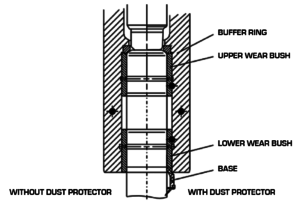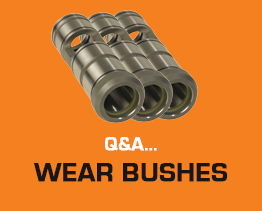Q&A
Wear bushes

There are two key factors that affect hammer bush wear – loading and lubrication.
A very commonly seen way to wear out wear bushes quickly is to side load the
hammer tool during use. This pushes the tool up hard against one side of the
bush, causing a point load and stopping grease from getting to the area. In larger
hammers, this misuse of the hammer will result in very short bush wear life,
sometimes as little as a shift in very hard conditions.
The second common way is lack of lubrication or greasing. Much like a car engine,
without oil it will stop very quickly. Low greasing levels results in the tool and bush
working against each other to generate heat and effectively melts the bush against
the tool against the tool over time. This creates premature wear of the bush, but
can also create failure of the tool.
Left unchecked, bush wear can result in catastrophic failure of the hammer,
irreversibly damaging the front head mechanism and pistonwhich is costly to replace.
By using the hammer correctly, vertically loading the tool before firing and ensuring
that the grease system is always delivering grease, a long wear bush life can be
expected, with changing only needed during general service intervals.
Click here to download the pdf version.


 Youtube
Youtube LinkedIn
LinkedIn Facebook
Facebook Instagram
Instagram